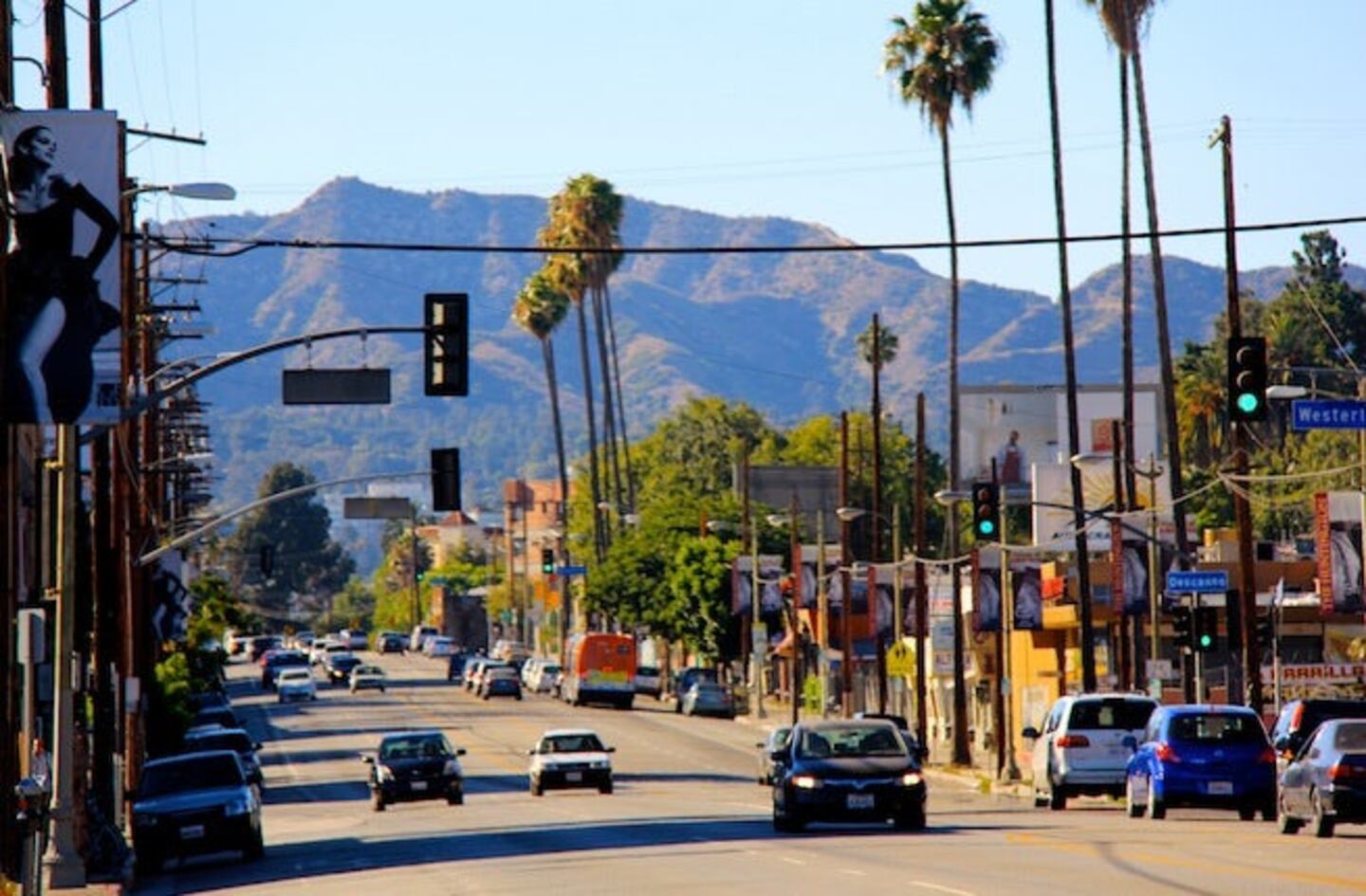
The Business of Fashion
Agenda-setting intelligence, analysis and advice for the global fashion community.

Agenda-setting intelligence, analysis and advice for the global fashion community.

LOS ANGELES, United States — This sunny Southern Californian city, with its thriving local garment industry, has long sustained a range of denim labels, t-shirt brands and other mid-priced apparel companies. But in recent years, a number of high-end fashion labels, including Band of Outsiders, Rodarte, Clover Canyon and The Elder Statesman have also made Los Angeles their home.
Then there is Hedi Slimane, who, after being appointed creative director of Saint Laurent last year, decided to base the iconic French brand's design studio in Los Angeles, where he has lived on and off since 2007.
The local manufacturing base isn’t really a factor for these brands, whose production needs are very different to those of mid-priced apparel companies and who, in many cases, work with suppliers and manufacturers spread across the world, often in Europe.
If anything, being based in LA can be an impediment. "It's challenging from a business perspective, primarily in terms of finding talent — design, management, great patternmakers. It's also incredibly far from Italy, where we make a lot of product, so that sucks," Scott Sternberg, who founded Band of Outsiders in Los Angeles in 2004, told BoF.
ADVERTISEMENT
So why is LA so appealing?
For most of the high fashion designers who have based their ateliers in LA, the decision comes down to lifestyle and the freedom to channel their creativity in a way that would be difficult elsewhere. “It puts me in the state of mind to be inspired, which makes it the best place for me as a human being, so by default as a designer,” said Sternberg.
LA-native Rozae Nichols, designer of Clover Canyon, a two-year-old label known for its use of bold pattern and colour, told BoF: “I consciously chose to stay here and make it work because I love the atmosphere, in spite of the technical challenges.” Unlike some of LA’s other upmarket fashion brands, Clover Canyon manufactures all its pieces locally, but rather than benefiting from the city’s existing manufacturing base, Nichols had to cultivate her own mini-ecosystem: “In terms of the facilities that exist for designers, it’s beginning to mature,” she said. “But historically the city’s industry has been centred more around moderate and budget fashion. There are a few of us who have pioneered the resources to become more sophisticated and skilled. But I had to carve out my own niche. It’s a commitment I made many years ago, to increase the skill and craft level, sometimes by training people myself and helping contractors finesse their capabilities, so that Los Angeles can become known not just for ‘moderate’ and ‘commodity’ but also for technique.”
Greg Chait, who designs the five-year-old knitwear label The Elder Statesman out of a Culver Canyon studio, attributed the appeal of Los Angeles to its unique mix of urbanity and wilderness: "The ability to dip in and out of any modality at any time is great," he said. "Real nature, some of the world's best museums and industry are all within minutes of each other. [There is] no other place like it in the world at this level."
Indeed with the blue-chip art collections of LACMA and the Getty Center just a short drive away from canyons and beaches, Los Angeles offers a rare combination of natural and man-made sources of creative inspiration. As Rodarte's Laura Mulleavy put it, "Working and living in Los Angeles, there is this underlying sense of freedom because at any moment you can travel to the most strange landscapes that are both prehistoric and futuristic."
Meanwhile, Hedi Slimane invariably maintains the importance of LA's rich noir subculture and vibrant music scene as the dominant sources of inspiration for his current creative output. "There is something almost haunted about Los Angeles, a vibrant mythology I find rather inspiring," Slimane told The New York Times.
But perhaps the most powerful reason these designers prefer LA to the established fashion capitals of New York, Paris and Milan, is the ability the city affords them to develop their own vision, free from the influences, pressures and distractions of being inside the belly of the fashion industry.
"If I was in New York, in this mix, influenced by the same thing all these people are influenced by, the edge would be gone," Sternberg told The Wall Street Journal. "This [L.A.] bubble is vital to being able to do something that is not informed by fashion."
Indeed, it's this outsider status that makes LA most appealing. "We aren't looking at fashion from a general perspective, but rather from our own viewpoint," said Kate Mulleavy. "The idea of the open road really begins and ends in California so it makes sense that we connect so deeply with the landscape."
From analysis of the global fashion and beauty industries to career and personal advice, BoF’s founder and CEO, Imran Amed, will be answering your questions on Sunday, February 18, 2024 during London Fashion Week.
The State of Fashion 2024 breaks down the 10 themes that will define the industry in the year ahead.
Imran Amed reviews the most important fashion stories of the year and shares his predictions on what this means for the industry in 2024.
After three days of inspiring talks, guests closed out BoF’s gathering for big thinkers with a black tie gala followed by an intimate performance from Rita Ora — guest starring Billy Porter.